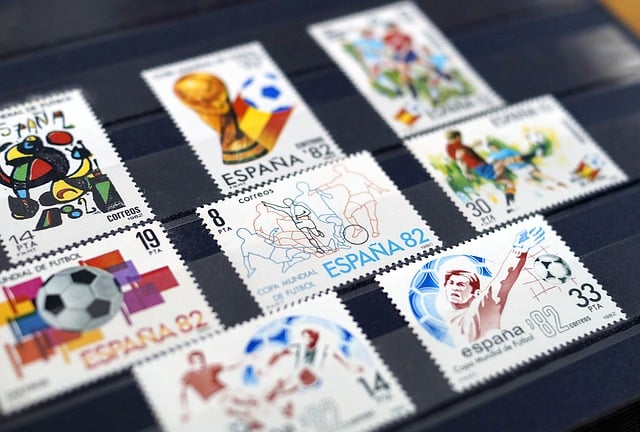
Stamp collecting can appeal to people of all ages, from very young kids to grandparents. People who have a fascination with history might enjoy delving into the world of stamp collecting because stamps can provide many interesting glimpses into the past. You might hear the word “philately” in connection with stamp collecting. “Philately” has a French and Greek origin, and it refers to the study of stamps, including their history, design, printing, and use.
Stamp Collecting Resources
If you are looking for a hobby that is easy to pursue from home, stamp collecting might be a good activity. Stamp collectors can approach this hobby in many different ways. Some collectors choose to use a general approach and gather as many different kinds of stamps as possible. Other collectors decide to specialize in certain areas, and they only collect particular stamps, such as stamps from certain periods or about certain subjects. You can spend as much or as little time and money stamp collecting as you wish. Once you start adding stamps to your collection, you will need a place to store them. Many collectors place stamps in special albums or binders with plastic pages and pockets for displaying them.
- Starting a Collection
- How to Begin Stamp Collecting
- Starting a Stamp Collection (PDF)
- Tips for Collecting Stamps
- Preserving and Conserving Your Collection
- How to Collect Stamps
- Reasons to Start Collecting Stamps
- 10 Philatelic Exhibiting Tips (PDF)
- Topical Stamp Collecting
- Exploring the Fascinating World of Stamps (PDF)
- World Stamp News
Stamp Collecting For Kids
Kids can become philatelists, too, and begin studying and collecting stamps. If you have a fascination in a certain subject, such as a country or an animal, you might build a stamp collection around your interest. You could begin collecting stamps with dogs or horses on them. Stamps can also teach you about history because they represent people and places of the past. To explore the world of stamp collecting and learn more about it, visit the library to read collecting books. You can also visit the post office to look at commemorative stamps available. Commemorative stamps are special stamps released to honor events, people, and places. Stamp clubs and stamp shows are other ways you can learn about this hobby.
- Exploring the World of Stamps in Your Classroom (PDF)
- Smithsonian Kids: Stamp Collecting
- An Introduction to Stamp Collecting
- Postage Stamp Terminology
- Glossary of Philatelic Terms (PDF)
Stamp Collector Organizations
Stamp collectors often like to spend time with other people who collect stamps to learn and share tips. Philatelic clubs may give members a chance to exhibit their collections and swap or sell stamps with each other. Joining a club can give members a chance to attend lectures and seminars to learn more about the hobby. Some collector organizations are designed especially for children to give them a chance to learn about stamps. You can also explore the world of competitive collecting in some stamp organizations. While some people just enjoy collecting stamps for their own personal pleasure at home, other collectors enter their stamps in competitions for judging and prizes.
- The United States Stamp Society
- Nashville Philatelic Society
- Metro Louisville Stamp Society
- Welcome to the World of Stamp Exhibiting
- The Collector’s Club History
- British North America Philatelic Society
- Omaha Philatelic Society
- Singapore Philatelic Museum
- Central Florida Stamp Club
- Utah Philatelic Society
- Postal History Foundation History
- Is Stamp Collecting for You?
Philately Resources
The history and study of stamps is a vast area. Great Britain issued the first postage stamp on May 1, 1840. These Penny Black stamps are well-known among collectors, and more than a million of them are still around today in people’s collections. When your collection of stamps makes you curious about their history and origin, you might wish to spend time exploring the philatelic background of the pieces in your collection. You can learn about the process of stamp design, stamp paper, watermarks, printing methods, adhesive gum, and perforated initials, which are special stamps that had initials or words perforated across them to prevent theft. Your philatelic studies could also explore the world of stamp fakes and forgeries. These stamps might involve real postage stamps that were changed to make them seem more valuable to collectors. A philatelic forgery involves fake stamps that people sell as authentic stamps. Governments have taken steps to prevent fake stamps, including using special watermarks and paper.
- Philatelic Library News (PDF)
- How Are Stamps Made?
- History of the Royal Philatelic Collection
- Postal Forgeries in Two World Wars
- Stamp Collecting (PDF)
- History of British Stamps
Creating a Space for Stamp Collections
Depending on how may stamps you have, you’ll either keep them in a book or in a box. For those with a huge number of stamps, you might consider creating a hobby room. You can convert a home office, add a new space or remodel another existing space. Some popular areas for your stamps might be the basement, a craft room or a portion of your living room. You can have them framed, put in a collage — whatever makes you comfortable to do with the collection. You can consult with a home decorator about the best way to place them as well.


Are You Familiar With This Topic? Share Your Experience.